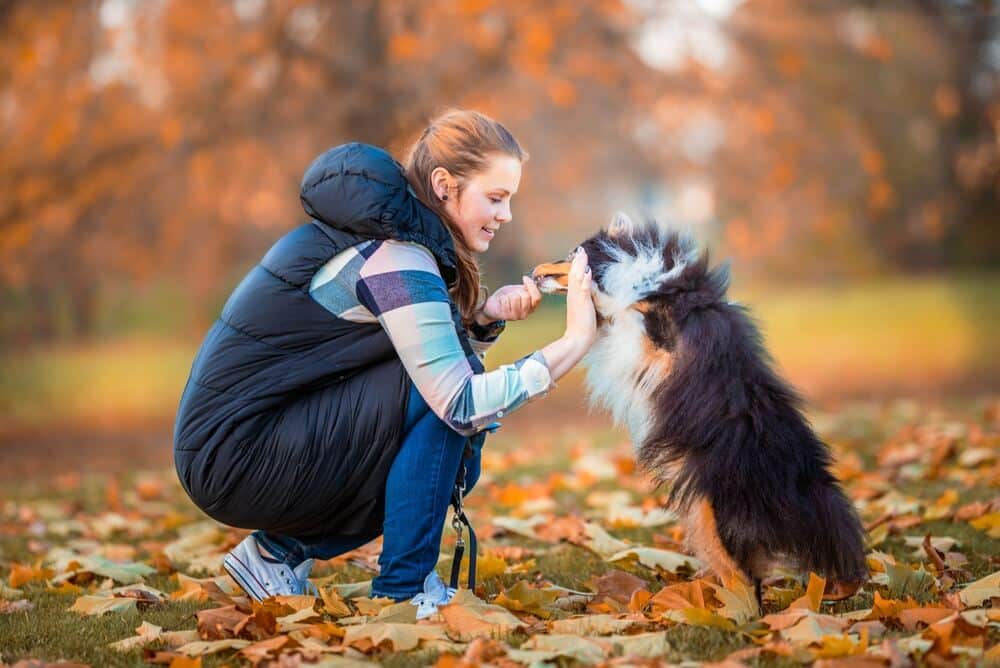Training your puppy allows you to develop a beautiful relationship with him. Your puppy will quickly learn and respond to signs of affection and rewards. Training will help create a lasting bond between you, and you will be rewarded with a happy, well-behaved dog. So, let’s know puppy training methods.
Absolutely! Here’s a breakdown of effective puppy training methods emphasizing the importance of positive reinforcement:
Key Puppy Training Principles
- Early Start: Training is easiest when puppies are young. Their minds are open to learning!
- Positive Reinforcement Rules: Puppies thrive on praise, treats, and play as rewards. This is the most effective and kind way to shape behavior.
- Consistency is Key: Use the same commands, give rewards immediately after good behavior, and be consistent in your expectations.
- Manage the Environment: Puppy-proofing your home prevents bad habits from forming (e.g., removing tempting chewables).
Specific Puppy Training Methods
- Crate Training: Creates a safe space, aids in housebreaking, and teaches your puppy to adjust to being alone for short periods.
- House-Training: Frequent potty breaks, rewards for going outside, and using a crate help establish good bathroom habits.
- Leash Manners: Short, playful walks teach your puppy to walk calmly beside you, which is important for their safety and socialization.
- Socialization: Early exposure to new people, dogs, and experiences builds a confident, well-adjusted pup.
- Sit and Stay: Basic commands create structure and are the foundation for further training, including stopping unwanted behaviors like jumping on guests.
- Anti-Biting: Teach your puppy bite inhibition by yelping when they nip too hard and then redirecting them to appropriate chew toys.
- Leaving Them Alone Gradually: Start with short absences while your puppy is happily occupied in a crate or playpen. Gradually increase the time alone.
- Anti-Chewing: Provide appropriate chew toys and distract your puppy when they chew on furniture. Supervision and puppy-proofing are essential.
Additional Tips
- Keep Sessions Short & Fun: Puppies have short attention spans. Playful training games are the best way to keep them engaged.
- Vary Your Training Locations: Practicing in different places helps your puppy generalize their skills beyond your living room.
- Consider a Clicker: Clicker training can be a helpful tool for marking the exact moment a puppy does something right.
Key Takeaway
Puppy training is built on love, patience, and rewarding the good! Focus on what you want your puppy to do rather than punishing undesired behaviors. This creates a strong, happy bond and a well-mannered dog who is a joy to live with.
Puppy Training Methods
Taking care of a puppy takes work. He bites, poops in the house, and barks constantly. Dogs learn by association. If your puppy does something good, reward him.
Then, he will be much more likely to repeat the action. However, the reward must be linked to the action, so you must reward your dog within one to two seconds of the action.
You can reward your puppy by giving him kibble, petting, or doing both simultaneously. Read these puppy training tips and stick to them when house-training your pup. See below puppy training methods.
- Train Your Dog To Use His Crate
Getting your puppy to spend time in his crate is a great way to get him used to house and potty training. Once he has adjusted to his new schedule, he will know when to take bathroom breaks and go to bed, making your life easier.
To help him learn to love his kennel, reward him every time he goes in and sometimes put his food in his kennel. He will love it because it will be comforting to him. You can leave it there whenever you go out, as long as it’s not for hours.
All the kennel club specialists we spoke to told us the importance of potty training your puppy when he arrives in your home. If your dog doesn’t learn these rules as a puppy, he may never follow them as an adult. The kennel, leash walking, and positive reinforcement will teach a puppy to wait until he is outside to do his business.
- Walking On A Leash
Playful puppies have difficulty heeling on a leash. But practice is best. Training your dog to walk calmly on a leash will help with socialization and potty training.
- Socialization
If you teach your puppy to socialize when he is young, he will gain confidence and be more friendly towards strangers and other dogs. Also, teach him to stay calm outside the house.
- Train Your Dog To Sit
Teaching a puppy to sit or lie down may seem like child’s play, but it’s an important skill. Use the “sit” command to stop him from jumping on visitors, to respect meal times, and as an introduction to other commands, such as “stay” and “come.”
When your adorable puppy grows into a 40 kg (90 lb) dog, you’ll be happy to master this command!
- Train Your Dog Not To Bite
Puppies love to chew on almost anything with their sharp little canines. He must be taught from a young age not to bite people or you. If he sinks his fangs, give a short, high-pitched cry in the same key as his yip. This signals that he bit too hard and needs to let go. Reward him or warmly encourage him when he obeys.
Another way to do this is to ignore it. Avoid scolding or punishing him, as your little fur ball may interpret it as another sign of attention, even if it is negative.
- Train Your Dog To Stay Home Alone
The dog is the social animal par excellence. Also, the puppy can experience a difficult ordeal when left alone for the first time. His gaining independence will, therefore, necessarily be part of your training goals.
Start by putting him in a cage or exercise enclosure in the house, which you transform into a reassuring and playful refuge. Put some toys and food in there so he can have fun and be satisfied after you leave. Close the cage door and slowly leave the area.
Come back after a minute or two with a reward or soothing words. Repeat the exercise, gradually increasing the duration of your absence.
Reward him when he stays calm and quiet. Each time he returns, don’t shower him with too many caresses so as not to increase his separation anxiety. After a few days of practice, you should be able to walk away without any problem and go to work in peace without a chorus of yapping.
Train Your Dog Not To Chew The Furniture
Avoid the shock you’ll get when you see shredded cushions and shoes chewed to pieces, not to mention furniture legs. As with biting, teething puppies tend to chew everything to relieve irritation in their gums. This is a good time to show him what he can chew and what is forbidden.
Never give him old shoes or socks to shred: he risks making a habit of it! This step should slow down his habit of chewing everything. If you catch him with a forbidden object in his mouth, bring him back to his rubber toys. Pat his head and encourage him to put his fangs in the objects provided.
Conclusion
Practice the following basic steps with your puppy daily for successful training. Keep training sessions short. Your puppy will consider this a game, so stimulate him by varying the exercises regularly. Repeat the commands for about five minutes and return to them when possible.
Give him commands in many different places so that he gets used to responding to you in all kinds of situations: in the living room, the garden, the entrance hall, the kitchen, and even on a walk.


